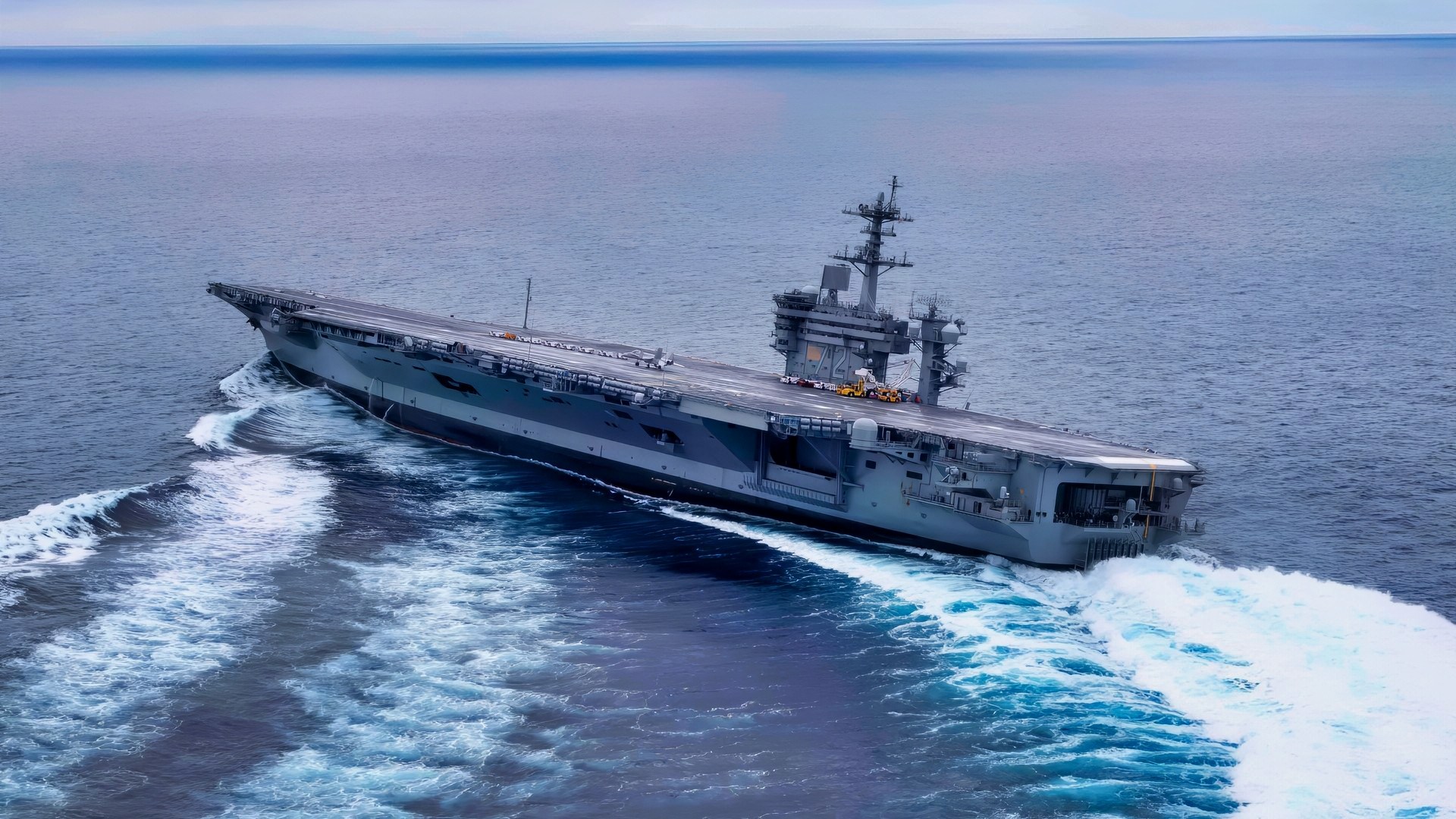Key Points and Summary – In 2015, the French Navy’s compact Rubis-class SSN Saphir reportedly penetrated USS Theodore Roosevelt’s (an aircraft carrier built for $4,500,000,000) defensive screen during COMPTUEX and scored adjudicated “kills” with exercise torpedoes.
-The result wasn’t a fluke but a reminder that quiet submarines, patient tactics, and cluttered coastal acoustics can challenge even a modern carrier strike group.
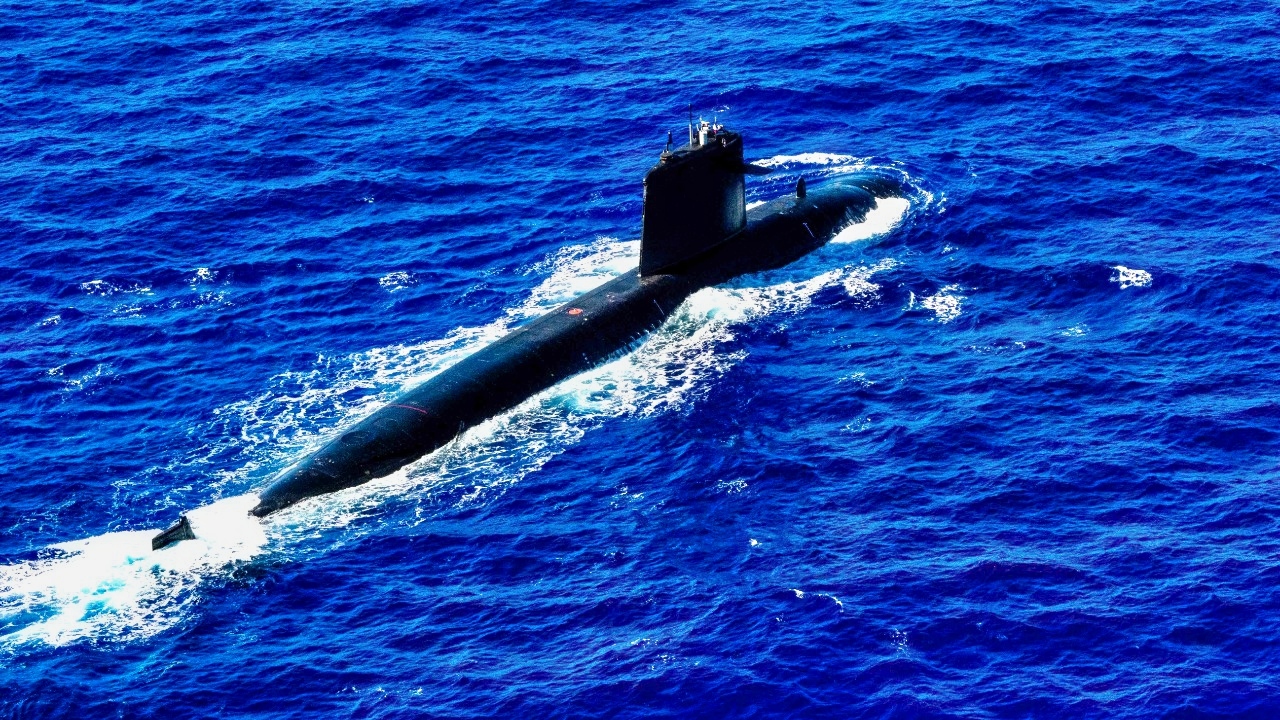
Rubis-Class. Image Credit: Creative Commons.

Rubis-Class Submarine. Image Credit: Creative Commons.
-Rubis boats punch above their weight: small signatures, refined quieting, and crews drilled for ambush in littorals.
-The U.S. Navy took the right lesson—more live reps with allied subs, thicker multistatic ASW, renewed speed discipline and emissions control, and a broader push to distribute risk while pushing the air wing’s reach outward.
How a French Rubis-Class Boat “Sank” a U.S. Aircraft Carrier—and Why That Shouldn’t Surprise Anyone
In early 2015, somewhere off the Florida coast, a thin, 240-foot shadow slipped inside the defensive ring of a U.S. carrier strike group. The boat was the French Navy’s nuclear attack submarine Saphir, one of the compact Rubis-class.
The target was USS Theodore Roosevelt (CVN-71), the centerpiece of Carrier Strike Group 12 during its pre-deployment work-ups. In the scripted confines of a major certification exercise, Saphir reportedly threaded the screen, lined up, and registered multiple “kills” with exercise torpedoes—on the carrier and some of her escorts—before being “destroyed” later in the scenario. No explosions, no drama—just a periscope photograph, a set of adjudicated attack solutions, and a collective intake of breath among sailors whose job is to keep the ocean safe for big decks.
Drills like this happen all the time, and they are designed to be unforgiving. The point is not to embarrass; it’s to teach. Still, this one stung because it confirmed something experienced antisubmarine warriors already knew: in the age of exquisite sensors and long-range missiles, the oldest truth at sea endures. A quiet submarine with a patient crew is an apex predator—especially in cluttered water—and even the most formidable surface force can be surprised if it underestimates that fact.
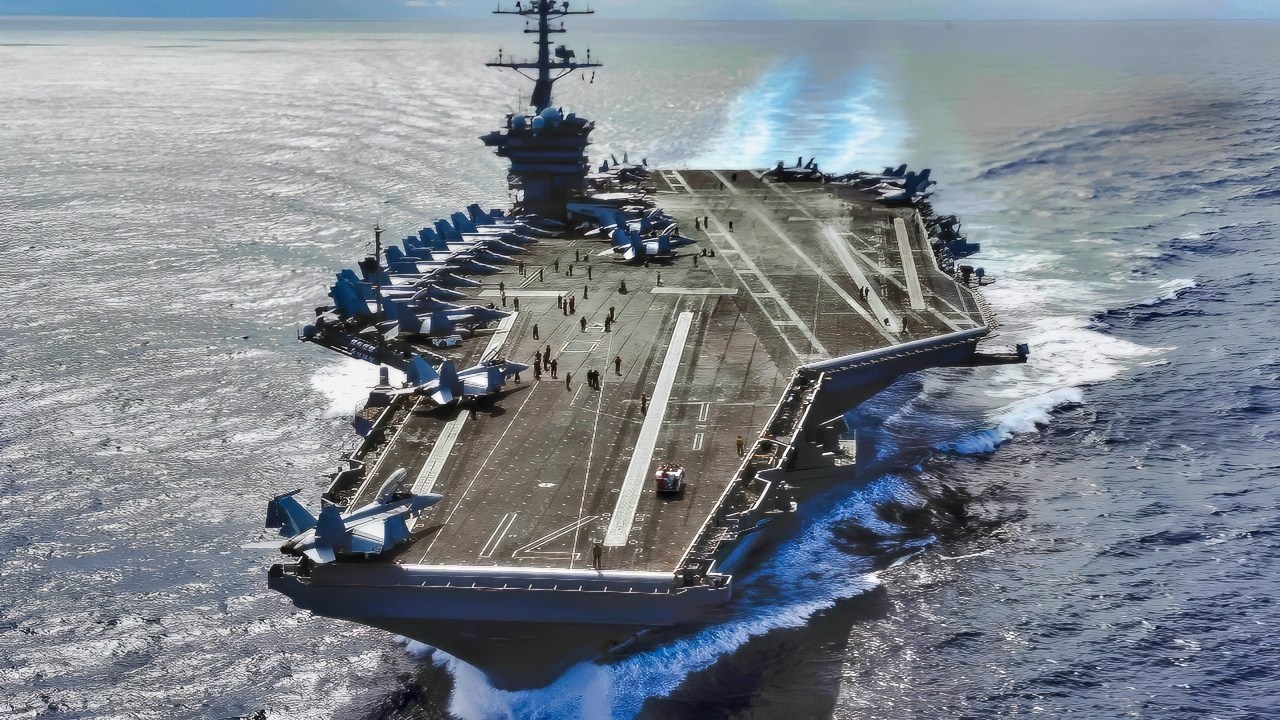
PHILIPPINE SEA (Sept. 24, 2024) The Nimitz-class aircraft carrier USS Theodore Roosevelt (CVN 71) transits the Philippine Sea, Sept. 24, 2024. Theodore Roosevelt, flagship of Carrier Strike Group 9, is underway conducting routine operations in the U.S. 7th Fleet area of operations. U.S. 7th Fleet is the U.S. Navy’s largest forward-deployed numbered fleet, and routinely interacts and operates with allies and partners in preserving a free and open Indo-Pacific region. (U.S. Navy photo by Mass Communication Specialist 3rd Class Adina Phebus)
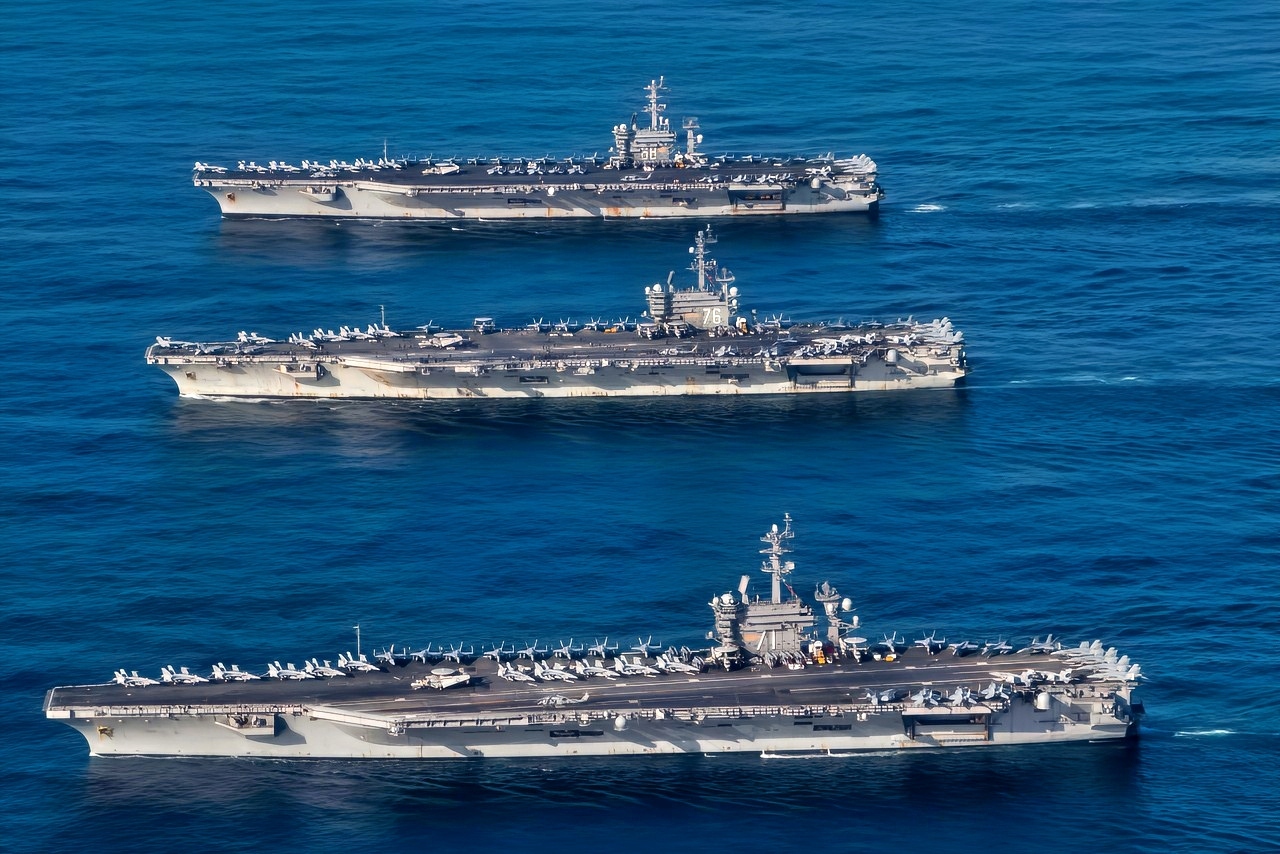
The U.S. Navy aircraft carriers USS Nimitz (CVN-68), USS Theodore Roosevelt (CVN-71) and USS Ronald Reagan (CVN-76) underway in the Western Pacific on 12 November 2017. The strike groups were underway and conducting operations in international waters as part of a three-carrier strike force exercise. This was the first time since August 2007 that three U.S. Navy carriers operated together. In 2007, USS Kitty Hawk (CV-63), USS Nimitz (CVN-68) and USS John C. Stennis (CVN-74) participated in exercise “Valiant Shield”.
What follows is the story behind the headline and the larger lesson the fleet took from it: why the Rubis-class punches above its weight, how Saphir likely earned her “kills,” why the U.S. Navy was right to take the episode seriously, and how the carrier era adapts—not ends—under the shadow of capable undersea adversaries.
A Pocket SSN Built For Ambush
The Rubis-class is an anachronism that works. Conceived in the 1970s and commissioned through the 1980s and early 1990s, France’s first-generation SSN is unusually small for a nuclear boat—about 2,700 tons submerged, 73.6 meters long, with a crew of roughly 60 to 70. That compactness is not a flaw so much as a design philosophy. Rubis boats were built to protect French ballistic-missile submarines, shadow adversary subs, perform intelligence missions in tight littorals, and, when needed, put a heavyweight torpedo into a surface combatant that wandered too close.
Size confers advantages. A short, narrow hull presents less wetted area and a smaller acoustic “footprint.” Fewer spaces mean fewer pumps, fewer rotating machines, fewer things that whine, hum, or rattle. The class went through a comprehensive acoustic upgrade (known by the AMÉTHYSTE standard) that reshaped the bow, stiffened mounts, and layered on the kind of acoustic treatments that French shipyards excel at. The result is a submarine that will never match the sprint-endurance of a U.S. fast-attack boat but is very, very hard to separate from background noise when she’s loitering at low speed.
Weapons and sensors fit the ambush brief. Rubis carries a mix of 533-mm F17 heavyweight torpedoes and SM39 Exocet anti-ship missiles, launched through four bow tubes with space for about 14 weapons. That’s not a lot of shots—but in peacetime exercises and the opening hours of a war, a boat like Saphir isn’t trying to fight a campaign from the magazine. She’s trying to get in one clean punch. Her sonar suite—modernized over the decades—was tuned for the kind of close-in work French submariners practice in the Mediterranean and North Atlantic: geometry, patience, and target motion analysis in water that defeats brute-force listening.
In other words: a pocket knife, sharpened to a razor’s edge.
The Exercise: How A Small Submarine “Killed” A Large Strategy
The event itself took place during the U.S. Navy’s Composite Training Unit Exercise (COMPTUEX), the last major certification a strike group must pass before deployment. COMPTUEX is not a single duel; it’s a long, evolving script that forces ships, aircraft, and staffs through intensifying vignettes.
According to contemporaneous French reporting, Saphir first played “blue” to help the Americans hone their sonar and coordinated tactics with P-3C Orions and then-new P-8A Poseidons. In the next phase, she switched to “red,” tasked to menace the carrier and her escorts. Somewhere in that second phase, she found a seam, crept in, and took her shots.
If you’ve spent time in that world, the playbook writes itself. The submarine identifies the mandatory transit lane the high-value unit must use to meet the exercise timeline, slips into that corridor early, and stops moving—letting the carrier group come to her. Movement is noise; stillness is stealth. She sits on or just above a sound layer, trims for neutral buoyancy, and listens. The strike group, meanwhile, is generating a complicated acoustic picture: hulls slicing water, propellers beating, pumps turning, aircraft dipping and recovering sonars, small craft buzzing, a baseline of merchant shipping, and the peculiar acoustics of coastal shallows. The escorts’ sonars search, but in shallow water the bottom scatters sound, temperature gradients bend beams in odd ways, and false contacts multiply.
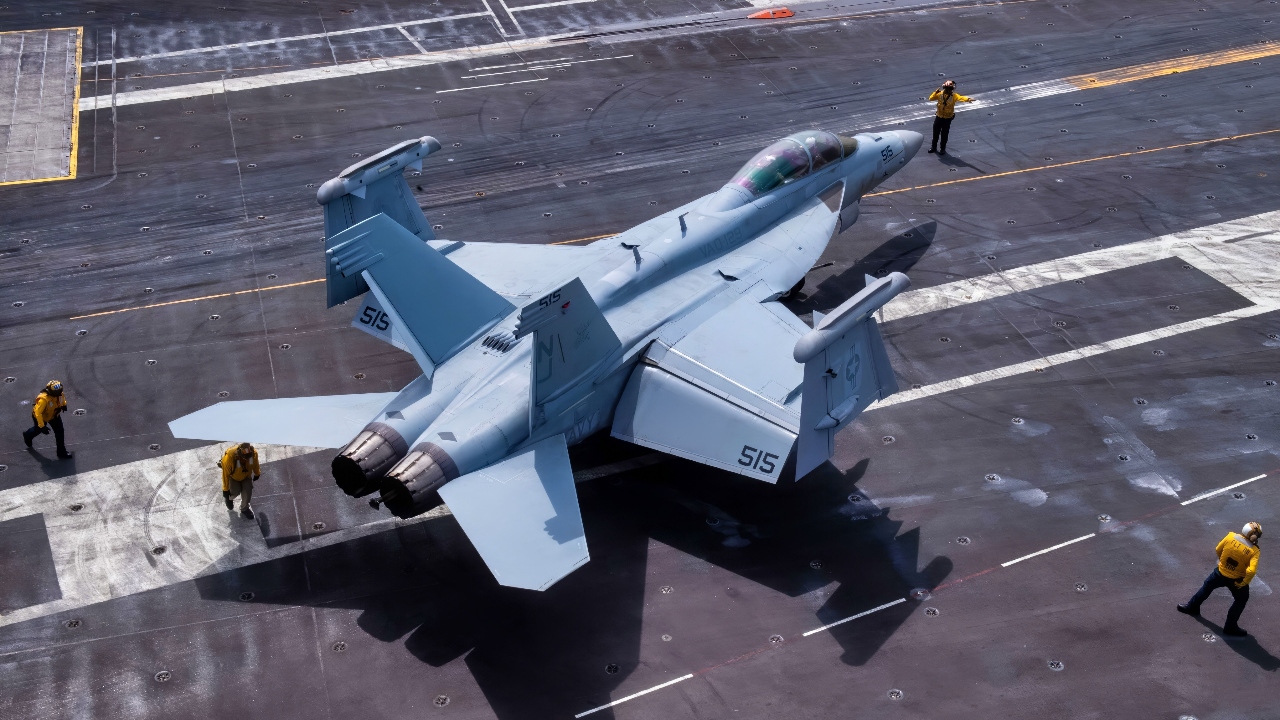
PACIFIC OCEAN (Aug. 11, 2025) – U.S. Navy Sailors direct an E/A-18G Growler, assigned to the “Vikings” of Electronic Attack Squadron (VAQ) 129, on the flight deck of the Nimitz-class aircraft carrier USS Theodore Roosevelt (CVN 71), Aug. 11, 2025. Theodore Roosevelt, flagship of Carrier Strike Group (CSG) 9, is underway conducting exercises to bolster strike group readiness and capability in the U.S. 3rd Fleet area of operations. (U.S. Navy photo by Mass Communication Specialist Seaman Apprentice Cesar Nungaray)
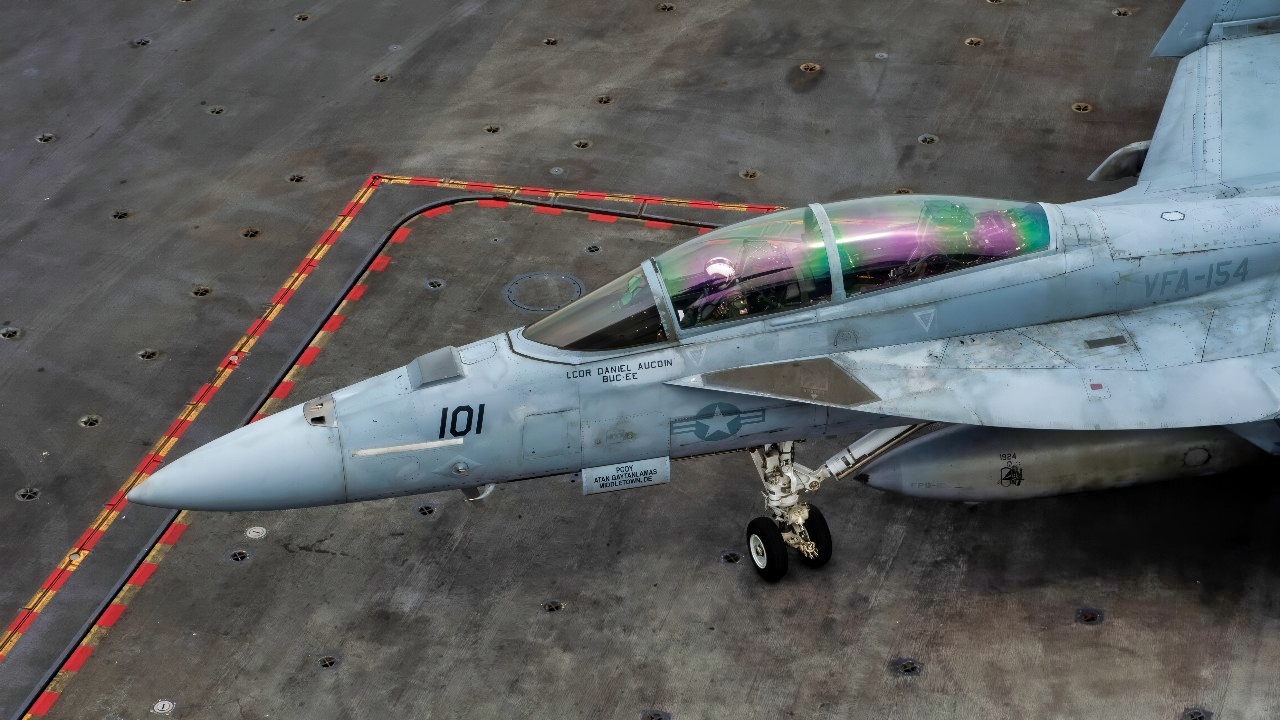
(July 24, 2025) – A U.S. Navy F/A-18F Super Hornet, assigned to the “Black Knights” of Strike Fighter Squadron (VFA) 154, transits the flight deck of Nimitz-class aircraft carrier USS Theodore Roosevelt (CVN 71), July 24, 2025. Theodore Roosevelt, flagship of Carrier Strike Group (CSG) 9, is underway conducting exercises to bolster strike group readiness and capability in the U.S. 3rd Fleet area of operations. (U.S. Navy photo by Mass Communication Specialist Seaman Maddix Almeyda)
The submarine inches—literal inches—when she must. She uses the time she has (and she has more of it than the carrier does) to let the geometry mature: bow angles changing slowly, bearings stabilizing, range estimates tightening. For a well-drilled crew, that patience creates a firing solution without ever having to race or risk a noisy sprint. When the moment is right, she pops to periscope depth for seconds to confirm with a quick sweep and a snap of the camera, then drops back down to cold iron and releases exercise torpedoes. In a real fight, the boat would likely salvo a pair of wake-homers or wire-guided heavyweights and then fade along a scripted egress track. In the drill, the kills are adjudicated and the submarine gets credit for what counts: getting inside the screen, undetected, long enough to shoot.
To be clear, exercises stack the deck both ways. The “enemy” submarine is often given rich intelligence on where the high-value unit must pass; the strike group is constrained by training objectives and timelines; and a simulated kill does not account for the dangers a sub would face once she reveals herself with real weapons. But those caveats don’t blunt the point. The geometry and the physics are real, and the lesson is old: if you must bring a very large ship close to land, expect a determined undersea hunter to meet you there.
Why This Wasn’t A One-Off “Gotcha” for the Aircraft Carrier
There’s a temptation—especially online—to treat the 2015 episode as either a humiliating “carrier killer” dunk or as nothing-burger propaganda. Both are lazy reads. What Saphir demonstrated in public view is what professionals on both sides of the periscope have known for decades: a modern submarine, nuclear or diesel-electric, is brutal to find in littoral water if she does the patient, boring things right. That’s not because carriers or their escorts are incompetent. It’s because water is a hostile medium for hunting, and because time pressure favors the sub.
By 2015, the U.S. Navy also carried a hangover from the post-Cold War years: ASW funding and training intensity had ebbed while two land wars soaked up people and money. The fleet never forgot how to hunt subs, but some muscles atrophied. Bringing in allied boats—French Rubis-class, Dutch Walrus-class, Chilean and Colombian diesel-electrics through the long-running Diesel-Electric Submarine Initiative—was a way to get those reps back, honestly. A French SSN that could make the carrier sweat was not a scandal; it was a gift.
Why The Rubis Class Punches Above Its Weight
If you’re used to the brawny scale of U.S. or British fast-attack boats, the Rubis seems almost toy-like. That’s deceptive. Three attributes make the class dangerous in exactly this kind of scenario:
Compact Quiet. At low speed, a small nuclear plant, refined isolation of machinery, and a tight hull form produce a signature that disappears into background clutter. The AMÉTHYSTE upgrade did not turn Rubis into a ghost, but it shaved and smoothed the edges in the frequency bands that matter for close-in stalking.
Doctrine Built For The Close Fight. French submariners train to ambush. You see it in their Mediterranean work-ups and in the way they practice target motion analysis without the crutch of constant sprinting. The boat’s limited magazine and modest top-end speed push crews toward patience over pursuit—a perfect fit for coastal choke points where the prey must come to you.

PHILIPPINE SEA (Feb. 5, 2024) The Nimitz-class aircraft carrier USS Theodore Roosevelt (CVN 71) transits the Philippine Sea, Feb. 5, 2024. Theodore Roosevelt, flagship of Carrier Strike Group Nine, is underway conducting routine operations in the U.S. 7th Fleet area of operations. An integral part of U.S. Pacific Fleet, U.S. 7th Fleet operates naval forces in the Indo-Pacific and provides the realistic, relevant training necessary to execute the U.S. Navy’s role across the full spectrum of military operations – from combat operations to humanitarian assistance and disaster relief. U.S. 7th Fleet works together with our allies and partners to advance freedom of navigation, the rule of law, and other principles that underpin security for the Indo-Pacific region. (U.S. Navy photo by Mass Communication Specialist 2nd Class Andrew Benvie)
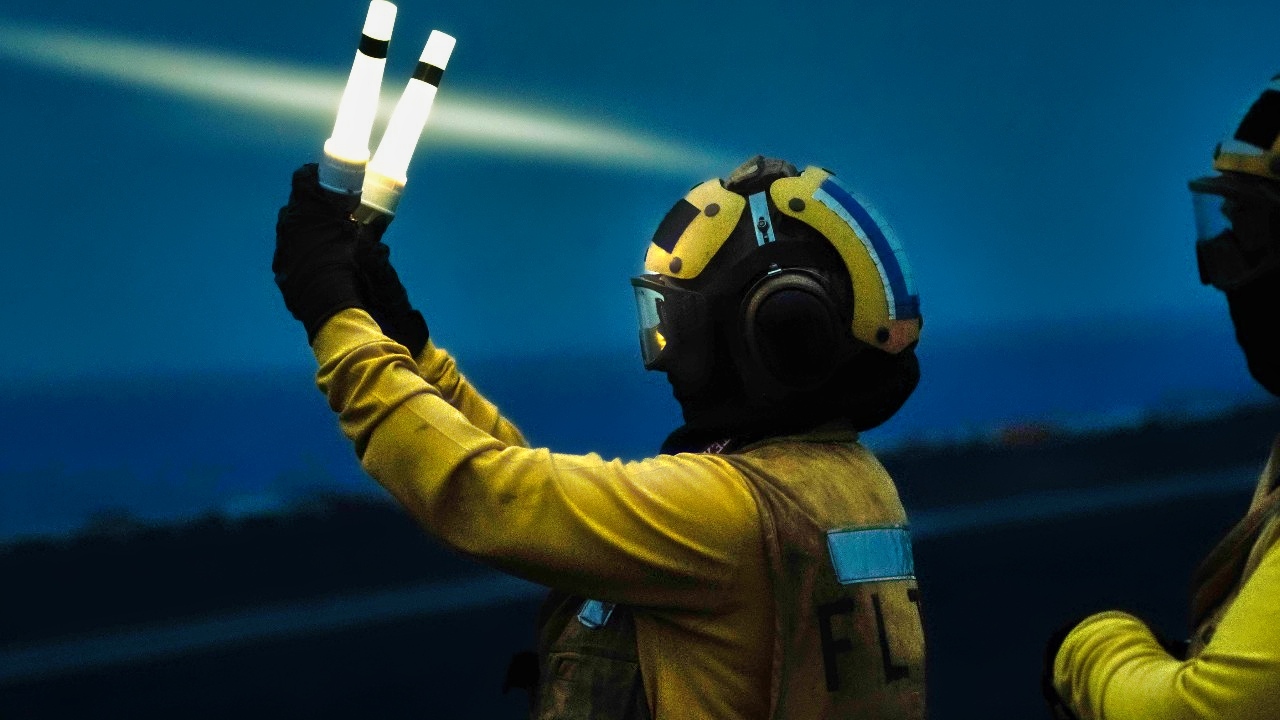
U.S. 5TH FLEET AREA OF OPERATIONS (Aug. 6, 2024) An Aviation Boatswain’s Mate (Handling) signals aircraft on the flight deck of the Nimitz-class aircraft carrier USS Theodore Roosevelt (CVN 71), Aug. 6. Theodore Roosevelt is deployed to the U.S. 5th Fleet area of operations to support maritime security and stability in the U.S. Central Command area of responsibility. (Official U.S. Navy photo)
Enough Sting. A mixed battery of heavyweight torpedoes and “pop-up” anti-ship missiles provides flexibility. In an exercise, the torpedoes’ simulated shots are the gold standard for a “kill.” In the real world, the SM39 gives a commander options against a distracted, medium-range surface target. None of that makes Rubis a capital-ship slayer by design; it makes her an honest threat in the one place where big decks are most vulnerable: forced geometry near shore.
The U.S. Navy Took The Right Lesson
The response to Saphir’s performance wasn’t outrage. It was relook at what works and what won’t. Over the last decade, the Navy has steadily thickened its ASW toolset and rebuilt the habit patterns that littoral hunting demands. The P-8A Poseidon replaced the P-3C and brought a modern multistatic sonobuoy architecture that lights up targets a single receiver might miss. The MH-60R community matured dipping-sonar tactics tailored for noisy, shallow water. Surface combatants saw renewed attention to variable-depth sonars and towed arrays. Submarines themselves were tasked more often as sub-hunters in carrier certifications, because sometimes the best way to sanitize a lane is to put a better wolf in it.
Equally important, the culture shifted back toward humility and patience. Escorts relearned speed discipline and emissions control—because high RPMs and chatty sensors help the submarine more than the screen. Staffs made more space for joint cueing from patrol aircraft and undersea arrays, stitched together into a common picture. And the fleet embraced more live sparring with quiet allied boats because there is no simulator for the ocean itself.
None of that makes a carrier invulnerable. It makes the carrier honestly survivable—and that’s the bar that matters.
“Carriers Are Doomed!” Isn’t The Takeaway
Every few years a war game result goes viral and the obituaries for big-deck carriers get dusted off. They never age well. The right way to read events like the 2015 drill is not as a death notice but as a design brief. Carriers are not going away—for deterrence, for crisis response, for sea control, for the simple fact that no other platform can deliver flexible, sustained airpower at sea. What changes is how and where they are used.
In a world dense with capable submarines and long-range anti-ship weapons, carriers must push their reach outward: longer-legged air wings (helped by organic tankers), stand-in unmanned systems that take risk off the manned force, and weapons that let strike packages fire from well outside the most lethal envelopes. The escorts must think like submariners and accept that the initial campaign in any serious maritime fight is an ASW campaign. And the fleet as a whole must distribute lethality—so that the enemy can’t focus all its hunting on a handful of very large signatures.
Rubis didn’t make carriers obsolete. She reminded everyone that the ocean is contested, and that winning in it is a team sport.
“Cheap And Small” Is The Point
Compared to a U.S. Virginia-class or a British Astute-class, the Rubis boats were relatively inexpensive and compact. That’s precisely why their success in drills should focus minds. If a first-generation French SSN with a small crew and a modest magazine can reliably create problems for the world’s most sophisticated surface force, imagine the pressure in a world where dozens of nations operate advanced diesel-electrics with air-independent propulsion and—more recently—lithium-ion batteries. The specific 2015 vignette featured a nuclear boat, but the pattern that matters is the same: quiet + patience + good water = danger.
For adversaries who can’t afford blue-water navies, this is a strategy, not a tactic. It’s sea denial in a box—one that costs a fraction of a single destroyer and forces a carrier strike group to spend time, attention, and magazine depth just to earn the right to come closer.
What The French Got Out Of It
This wasn’t a one-sided lesson. For the Marine Nationale, Saphir’s time against an American carrier group at full tempo was priceless.
It validated a generation of design and tactics, gave crews real-world experience in different acoustics, and provided data that flowed forward into the successor Barracuda/Suffren class. It also spotlighted something allies sometimes forget: the value of allied sparring. Nobody learns faster than a fleet that willingly puts its crown jewels into hard scenarios with friends who can and will exploit your mistakes.
The Enduring Takeaway for the Aircraft Carrier and All Navies
Strip away the memes and the tribalism, and you’re left with a quietly optimistic story. In 2015, a well-handled, compact French SSN exploited the ocean’s physics and a training fleet’s constraints to bag a simulated carrier. The U.S. Navy read the room, doubled down on the basics, and kept inviting allied submarines to make life hard in work-ups. Carriers kept doing what carriers do. Submarines kept sharpening the stealth that makes them terrifying.
If you’re looking for a single line to carry out of all this, it might be the one old submariners already live by: design for the worst day, train for the worst day, and assume your opponent is doing the same. On a gray morning off Florida in 2015, a little French submarine proved the wisdom of that creed.
About the Author: Harry J. Kazianis
Harry J. Kazianis (@Grecianformula) is Editor-In-Chief and President of National Security Journal. He was the former Senior Director of National Security Affairs at the Center for the National Interest (CFTNI), a foreign policy think tank founded by Richard Nixon based in Washington, DC. Harry has over a decade of experience in think tanks and national security publishing. His ideas have been published in the NY Times, The Washington Post, The Wall Street Journal, CNN, and many other outlets worldwide. He has held positions at CSIS, the Heritage Foundation, the University of Nottingham, and several other institutions related to national security research and studies. He is the former Executive Editor of the National Interest and the Diplomat. He holds a Master’s degree focusing on international affairs from Harvard University.
More Military
A $6,000,000,000 Nuclear U.S. Navy Aircraft Carrier ‘Sunk’ by $100,000,000 Diesel ‘AIP’ Sub
Russia’s ‘New’ Mach 4.3 MiG-41 Stealth Fighter Will Never Fly Off the Drawing Board
The Royal Navy’s Big Queen Elizabeth Aircraft Carrier Mistake Still Stings
2,960 Warplanes Built: The A-4 Skyhawk Has a Message For Any Military on Earth
Big Equipment Losses in Ukraine Mean Russian Troops Move Ammo With Donkeys


